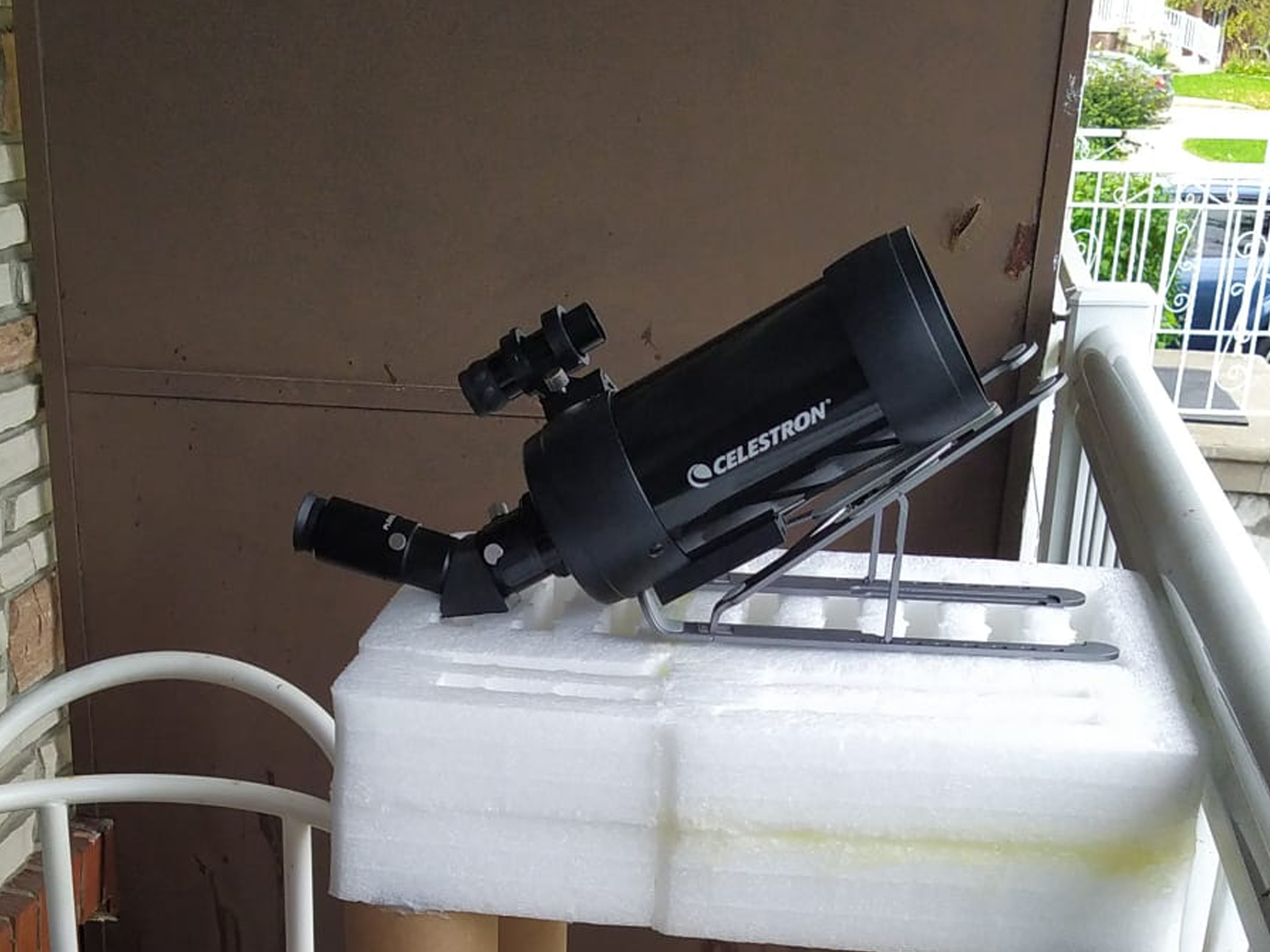- Home
- Project Astro
ASTRO
HOBBY | Nov, 2021 to Present
Last Updated on 15-Mar-2025
Astrophotography has become more than just a hobby; it is our way to connect with the vastness of the universe and share its hidden wonders with others. Through this page, we are hoping to take you along on our journey under the night sky, capturing deep-sky objects, star clusters, nebulae, planets, and anything else that catches our eye through the lens and telescope. Every photo here is the result of hours of planning, setup, and patient waiting under clear, often chilly skies, but seeing the final image makes every moment worthwhile. Here we post our shots, from first attempts to more polished work, along with stories, equipment, details, and lessons learned along the way. Our hope is that these images inspire you to look up more often, wonder a little deeper, and maybe even pick up a camera or telescope yourself. The sky is vast, full of mysteries, and always ready to reveal a new side to those patient enough to watch.
To learn more about our GEAR, click HERE.
We are Here!

Captured California Nebula
MAR 2025
With our DSLR and telephoto lens, we imaged the California Nebula (NGC 1499) in Perseus, a glowing red arc of hydrogen gas stretching across the sky. Despite its low surface brightness, long exposures revealed its full shape, reminiscent of the U.S. state. Ionized by nearby star Xi Persei, this massive emission nebula became one of our most rewarding narrow-field deep-sky captures to date.
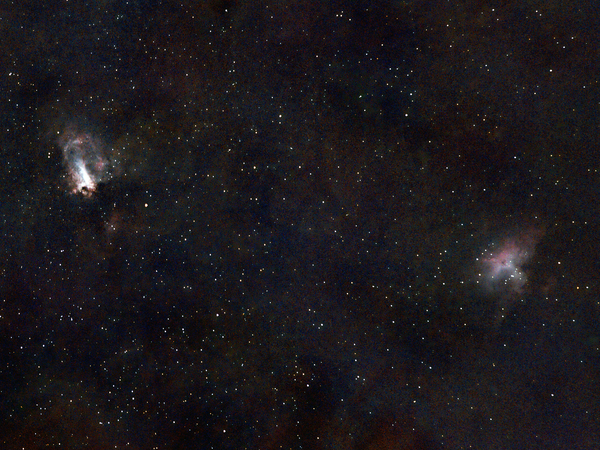
Captured Omega and Eagle Nebula
SEP 2024
Using our DSLR setup, we captured two iconic nebulae, the Omega (M17) and the Eagle (M16), shining brightly among the star-filled skies of the Milky Way. Both regions glow in hydrogen-alpha light, showcasing active star formation and young, hot stars. The Eagle Nebula revealed faint traces of the Pillars of Creation, while Omega's swan-like shape stood out beautifully. These captures marked our first foray into imaging high-emission nebulae in Sagittarius and Serpens.
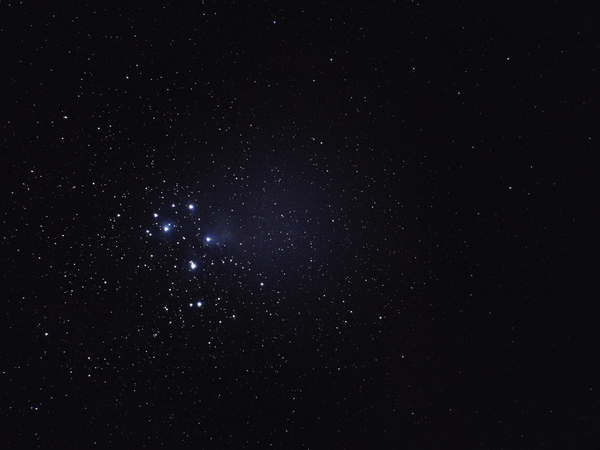
Captured Pleiades
AUG 2024
We turned our DSLR toward The Pleiades (M45), also known as the Seven Sisters, in Taurus. This young star cluster glows with brilliant blue stars surrounded by faint reflection nebulae. With long exposures and stacking, we revealed the soft haze of interstellar dust. The clarity of stars like Alcyone, Maia, and Electra made this one of our most elegant and rewarding wide-field captures to date.
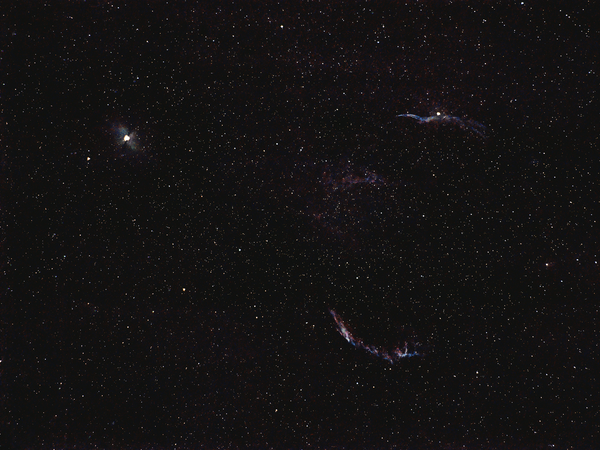
Captured Veil Nebula
JUN 2024
This capture of the Veil Nebula complex showcases both the Western (NGC 6960) and Eastern (NGC 6992) filaments, remnants of a supernova that exploded over 10,000 years ago in Cygnus. Using our DSLR and telephoto lens on the Star Adventurer mount, we revealed delicate wisps of ionized gas glowing in vibrant red and blue hues. It's one of our most visually dynamic and technically challenging wide-field deep-sky targets so far.
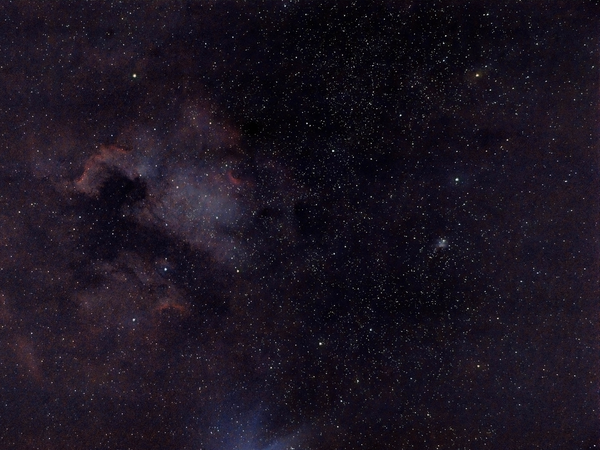
Captured North American Nebula
APR 2024
Using our DSLR and 300mm lens on the Star Adventurer Pro 2i, we captured NGC 7000, the North America Nebula, alongside the Pelican Nebula (IC 5070) and surrounding dark dust clouds. Post-processing brought out the red hydrogen-alpha glow and defined shapes resembling the Gulf of Mexico. Seeing multiple nebulae and star-forming regions in one wide frame made this our most complex and rewarding deep-sky image so far.
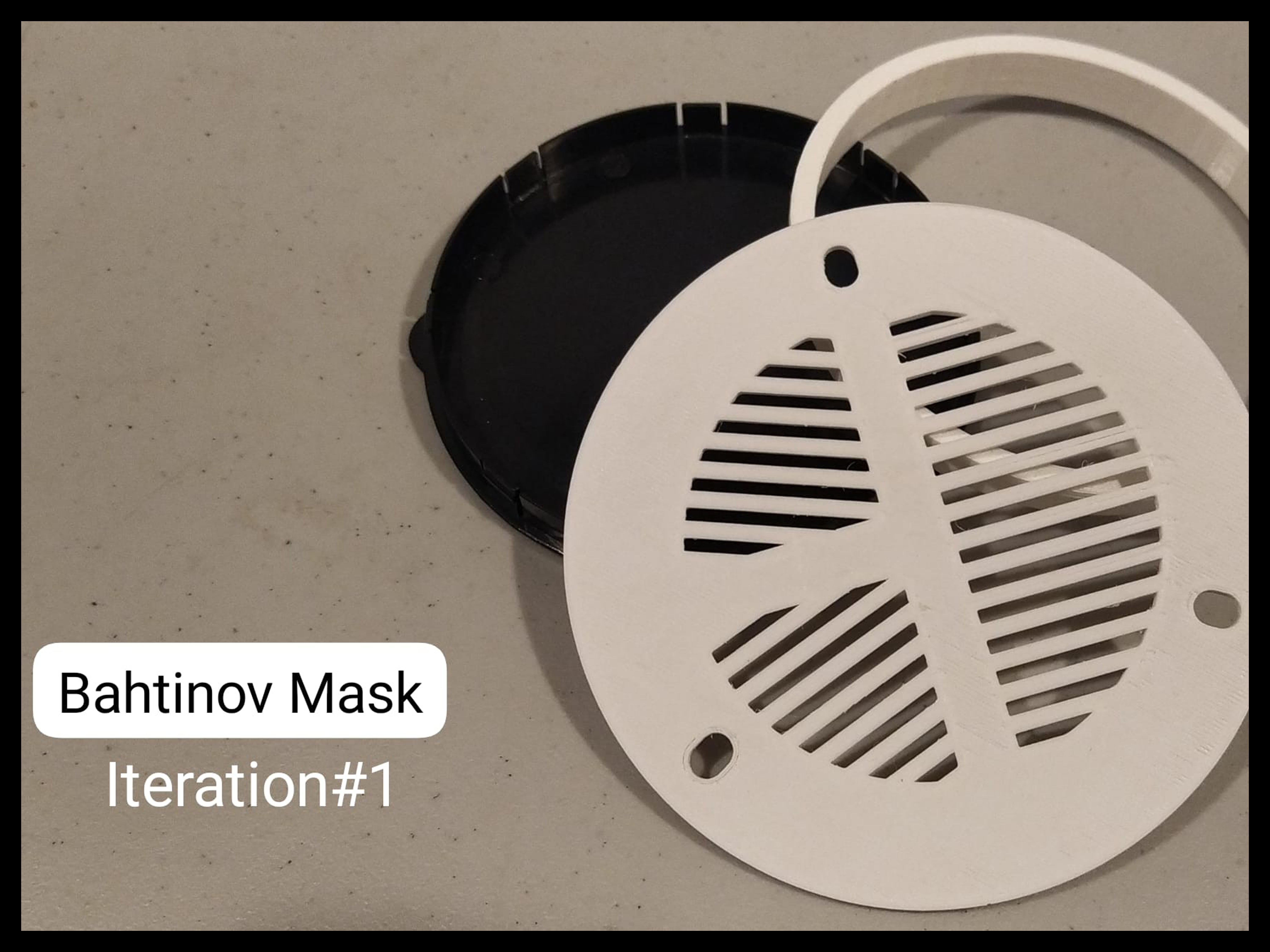
Designing a Bahtinov Mask for DSLR & Telescope
APR 2024
Achieving precise focus is critical in astrophotography, so we designed and built a custom Bahtinov mask for both our DSLR lens and Celestron C90 Mak. Using 3D design software and carefully measured spacing, we created a tool that produced sharp diffraction spikes to assist with perfect focus. This DIY upgrade drastically improved image clarity, especially during deep-sky and planetary captures.
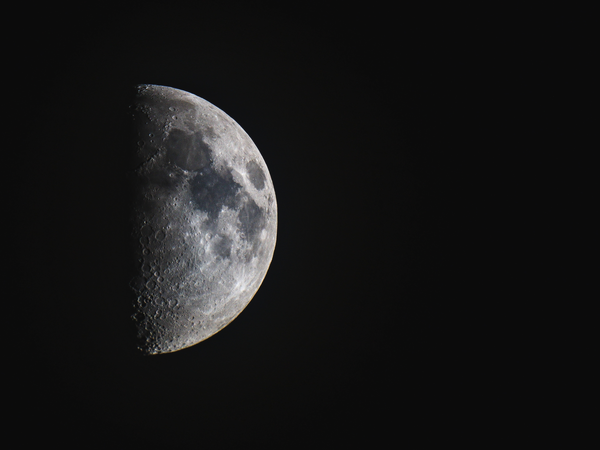
Capturing Craters and Maria on Moon Surface for Detailed Study
OCT 2023
Zooming in with our telescope and DSLR, we focused on capturing individual craters and lunar maria in high detail. Features like Autolycus, Archimedes, and the Sea of Tranquility stood out with striking clarity. This phase of our journey shifted from casual imaging to scientific curiosity, an effort to study the Moon's structure and surface history frame by frame.
/Andromeda_2_Framless-thumbnail.png)
Captured Andromeda Galaxy (Using DSLR)
SEP 2023
This was our first deep-sky capture using only a DSLR and a 300mm telephoto lens. Mounted on the Star Adventurer Pro 2i, the camera tracked Andromeda (M31) across the sky. Stacking multiple long exposures revealed not just the galaxy's bright core, but even its faint satellite galaxies M32 and M110. It proved what's possible with basic gear, clear skies, and patience.

Capturing Planets: Jupiter with its Moons and Saturn with ring
AUG 2023
Seeing Jupiter and its Galilean moons through our telescope was breathtaking. Shortly afterward, Saturn revealed its majestic rings, tiny yet distinct. Capturing these gas giants pushed our equipment to its limits but produced unforgettable results. These planetary images marked our transition from casual observers to dedicated skywatchers.
Lunar Tracking with Polar Alignment
JUN 2023
With our equatorial mount properly polar aligned, we attempted our first accurate lunar tracking session. The difference was immediate. No more constant adjustments to keep the Moon centered. Using our DSLR on the Celestron C90 Mak, we captured crisp lunar shots with long exposures. This was a huge milestone, proof that precise alignment turns a basic setup into a reliable tracking system.
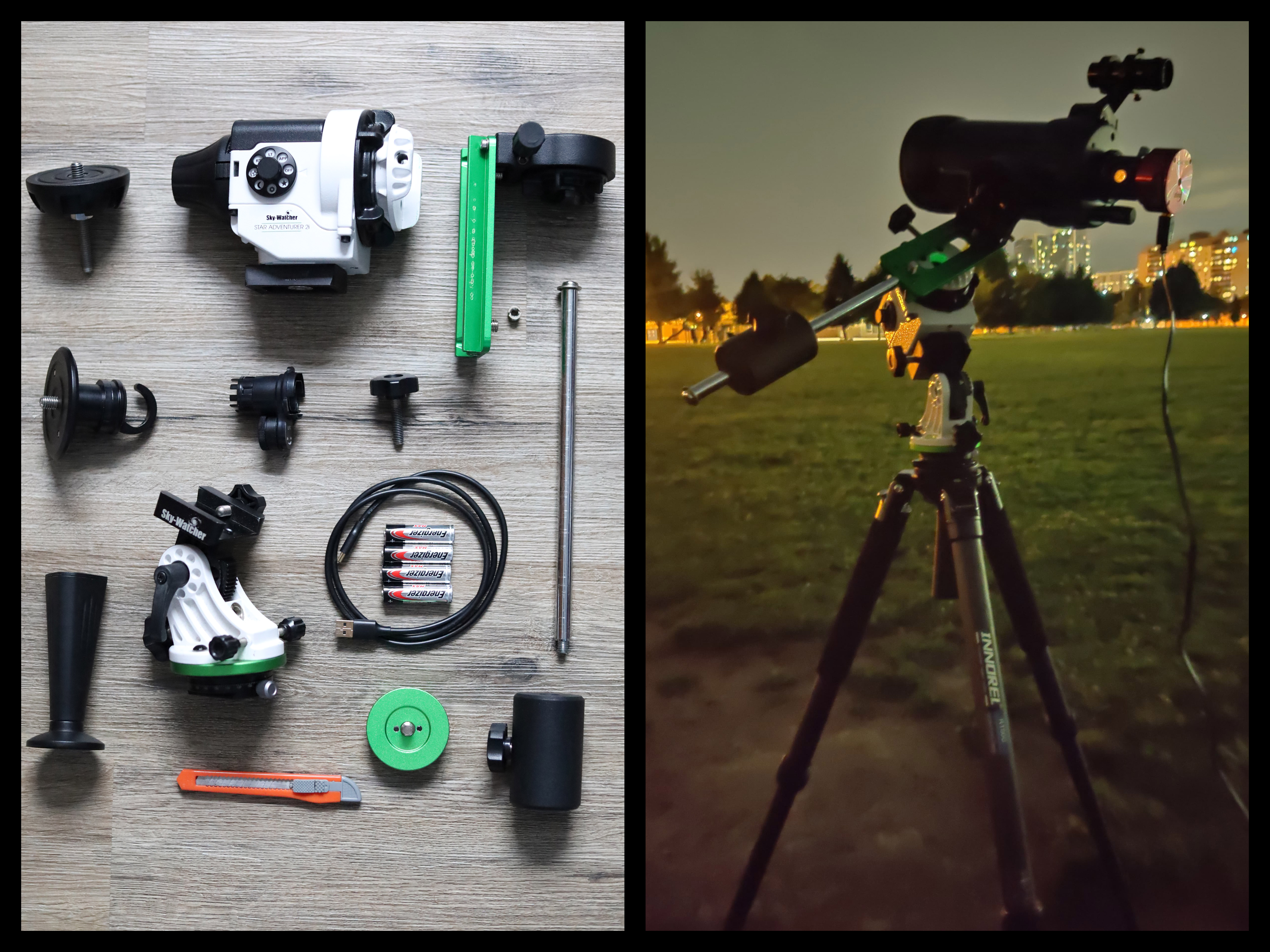
Getting an Equatorial Mount
APR 2023
To improve tracking for astrophotography, we added the Sky-Watcher Star Adventurer Pro Pack 2i with WiFi to our setup. Compact yet powerful, it allowed accurate tracking of celestial objects-essential for long exposures. Assembling the mount was exciting, and learning polar alignment was a rewarding challenge. This upgrade marked a major step forward, shifting our interest from casual stargazing to more serious imaging work.
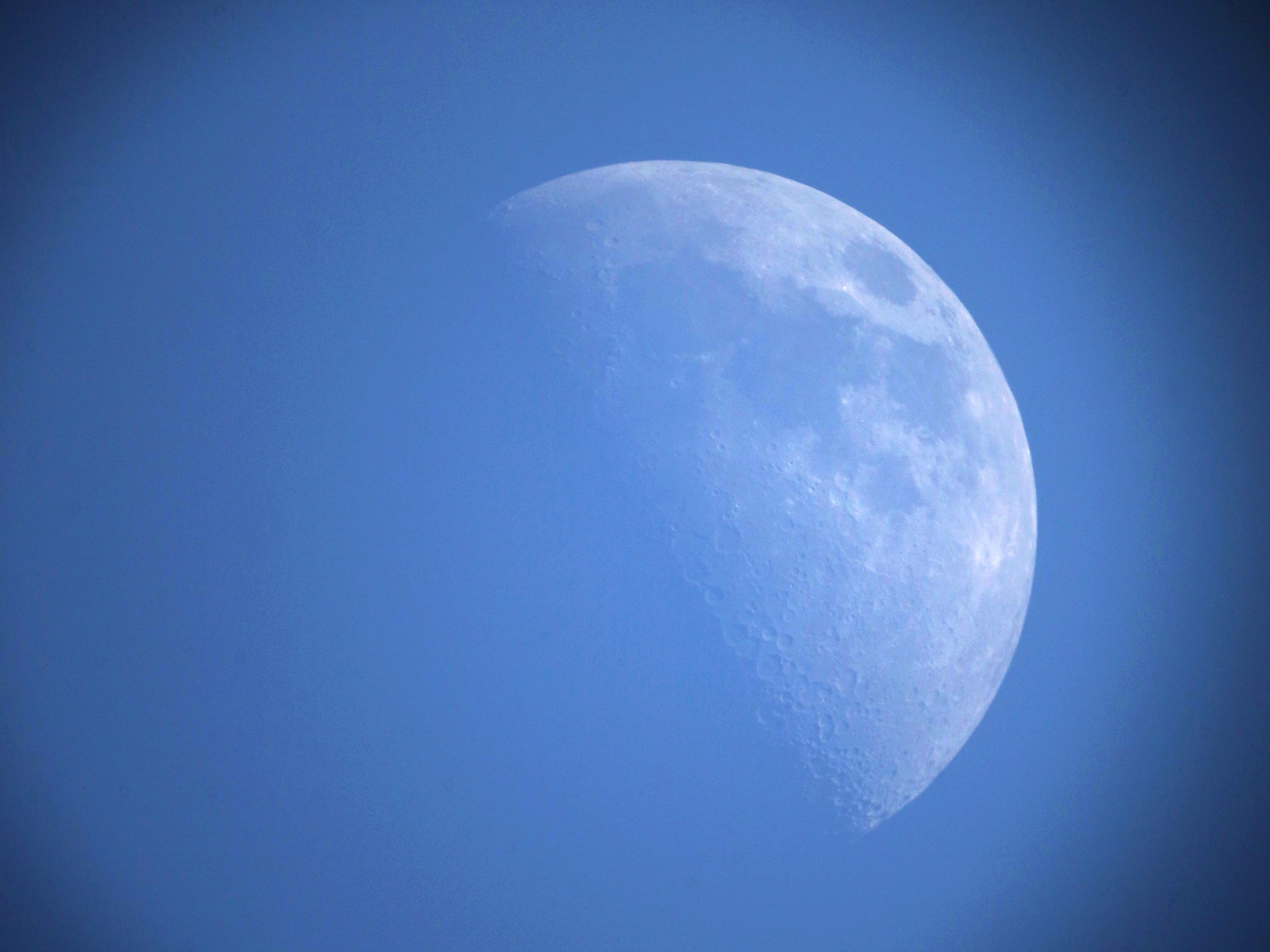
Capturing the Moon with a Telescope
OCT 2022
Our first successful lunar shot felt like magic. Using the Celestron C90 Mak and a smartphone adapter, we focused on the waxing gibbous Moon during daylight. The amount of detail visible-even in a simple setup was astonishing. Craters, shadows, and surface textures came to life. This moment marked our shift from just observing to capturing and preserving the cosmos, one frame at a time.
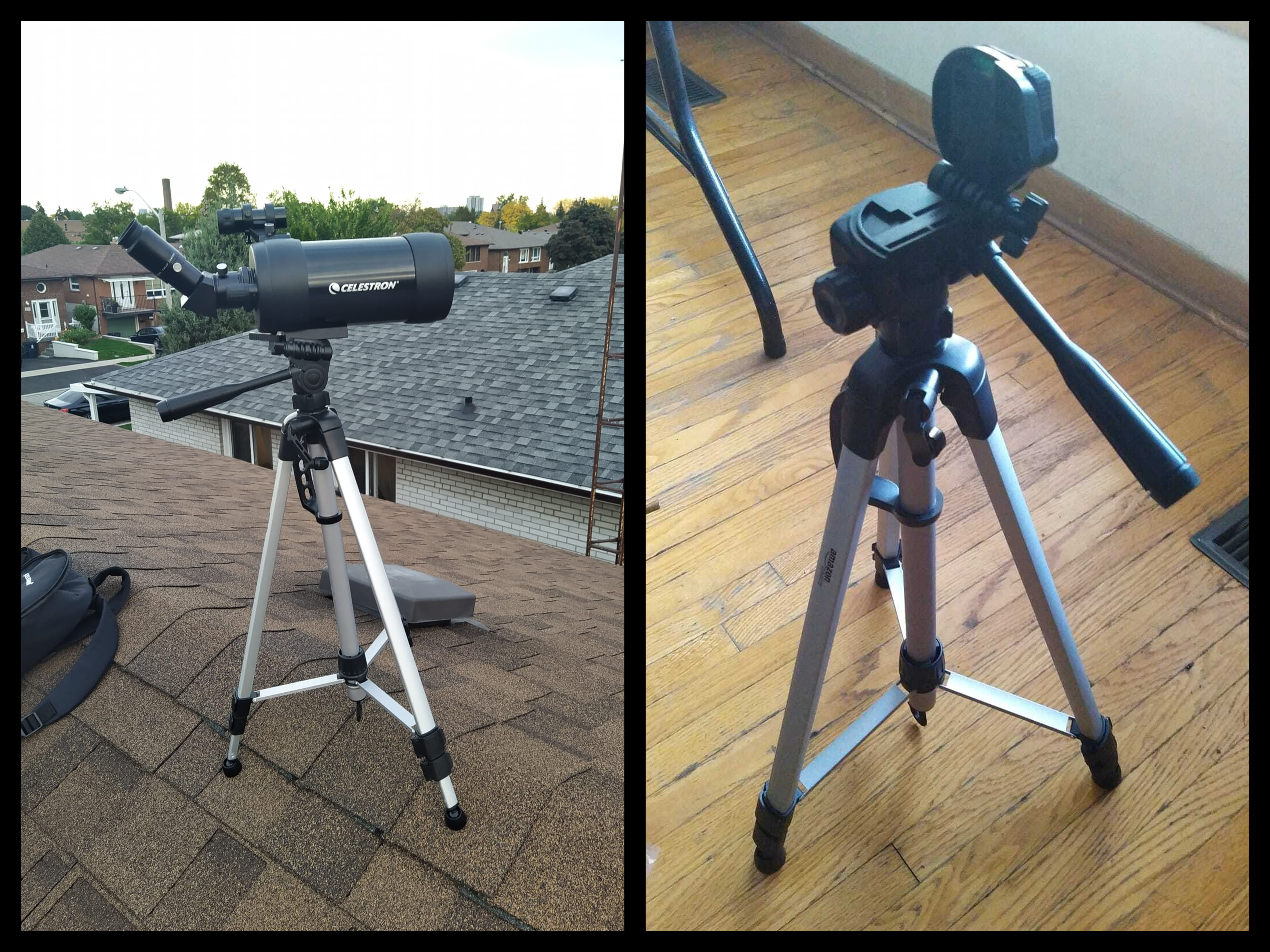
Telescope Operation
Feb 2022
With the telescope now in our hands, we began learning the basics of its operation. Understanding how to align the finder scope, balance the mount, and achieve proper focus took time, but every step brought us closer to the stars. Setting it up on a sturdy tripod, we started with easy targets like the Moon and Jupiter. It was a rewarding experience to finally see those celestial wonders with our own eyes.

Getting the Telescope
Nov 2021
After weeks of research, we finally got our hands on the Celestron C90 Mak. Unboxing it was a thrilling moment, marking the true beginning of our journey into the cosmos. The compact design, sturdy build, and simple setup made it perfect for beginners like us. Along with the main optical tube, the package came with essential accessories that got us started right away.


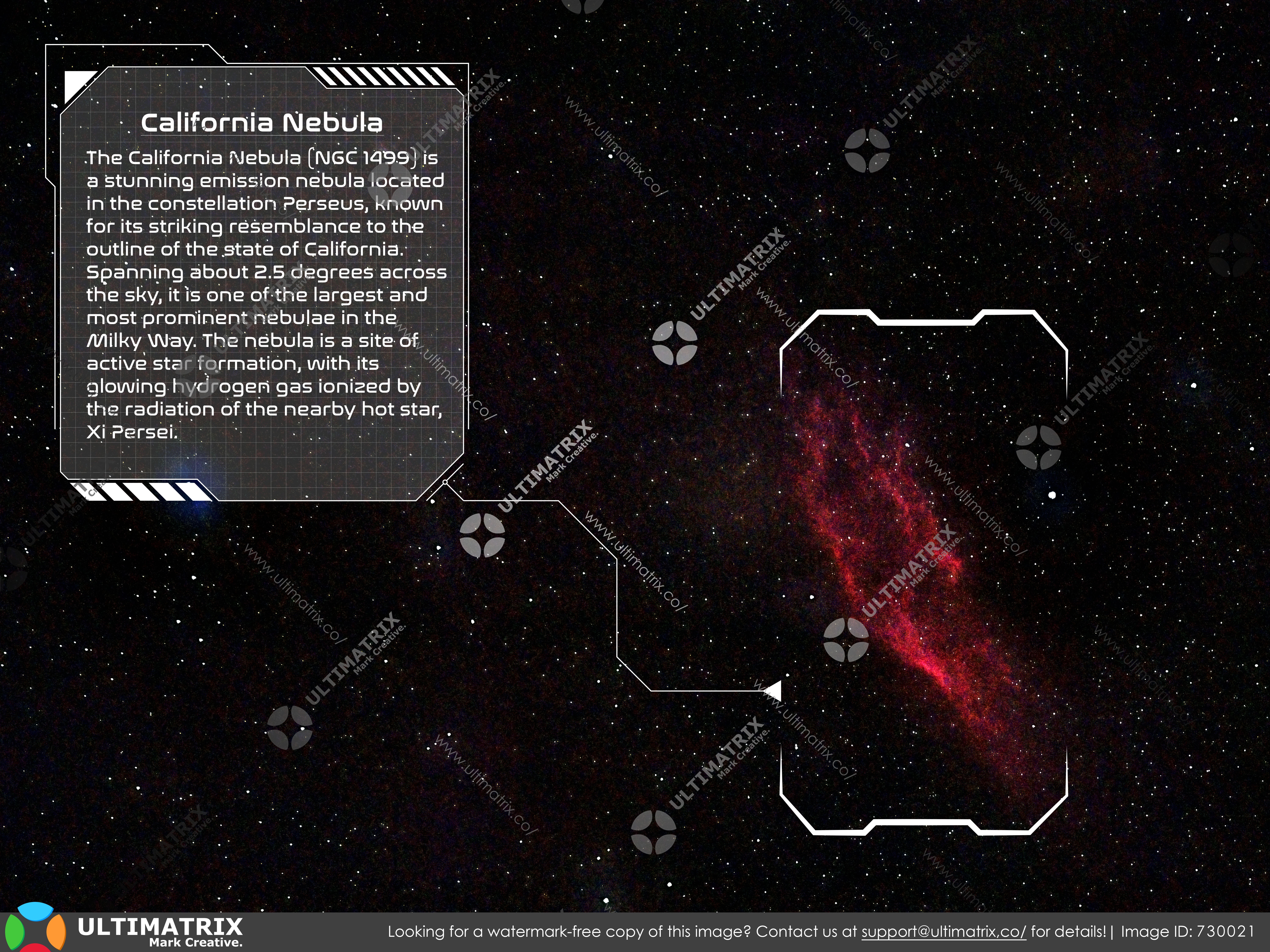

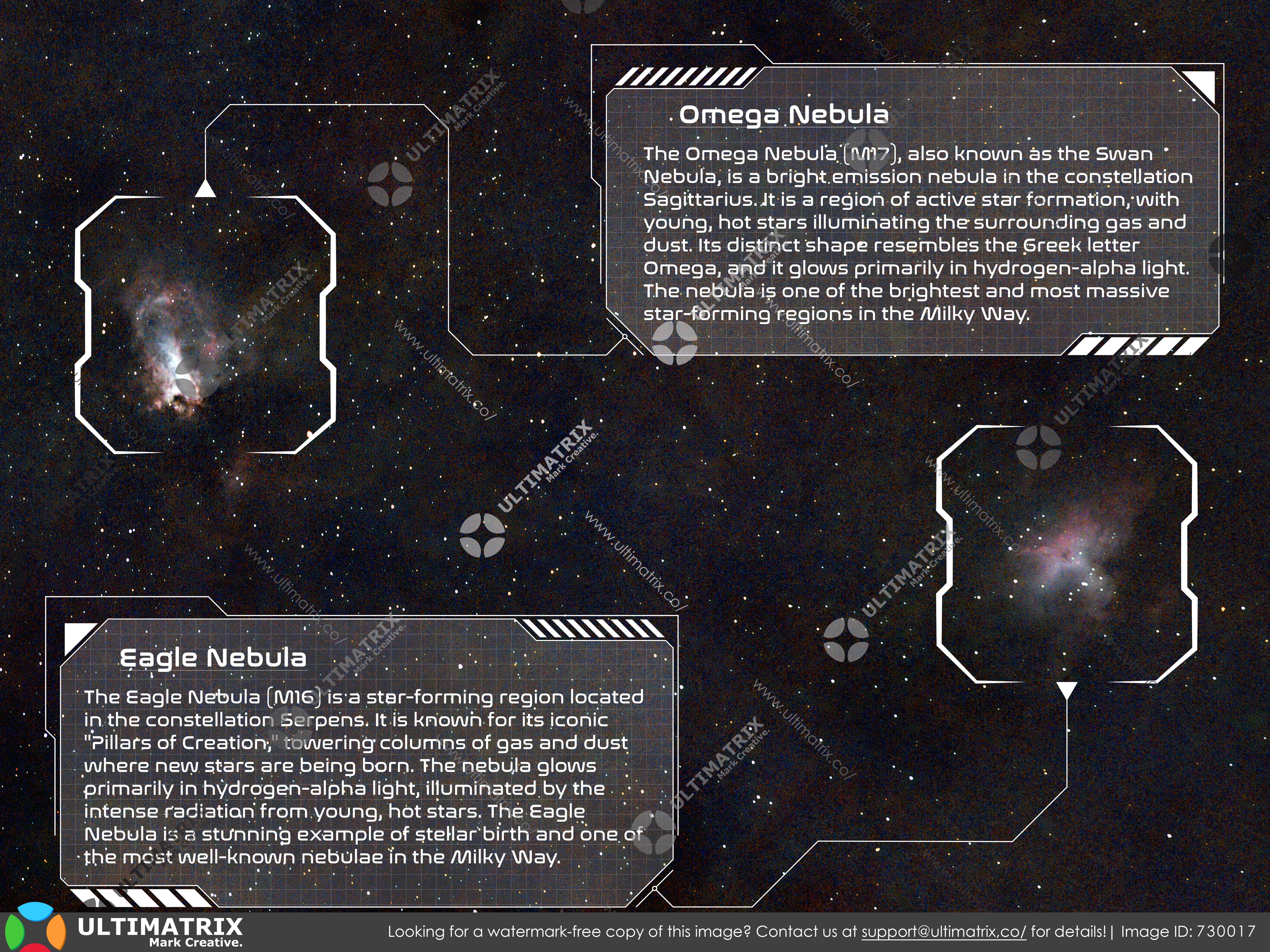
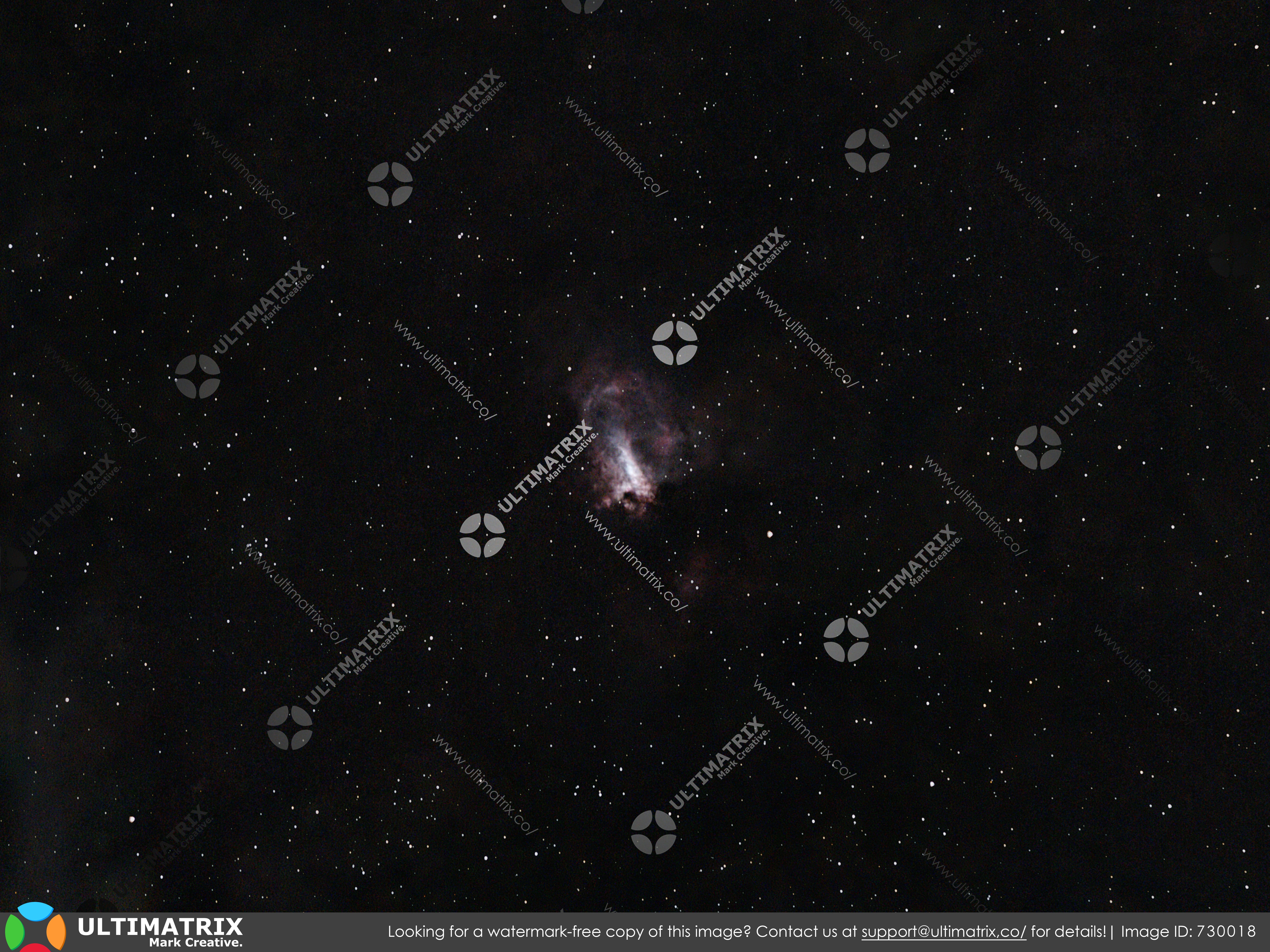
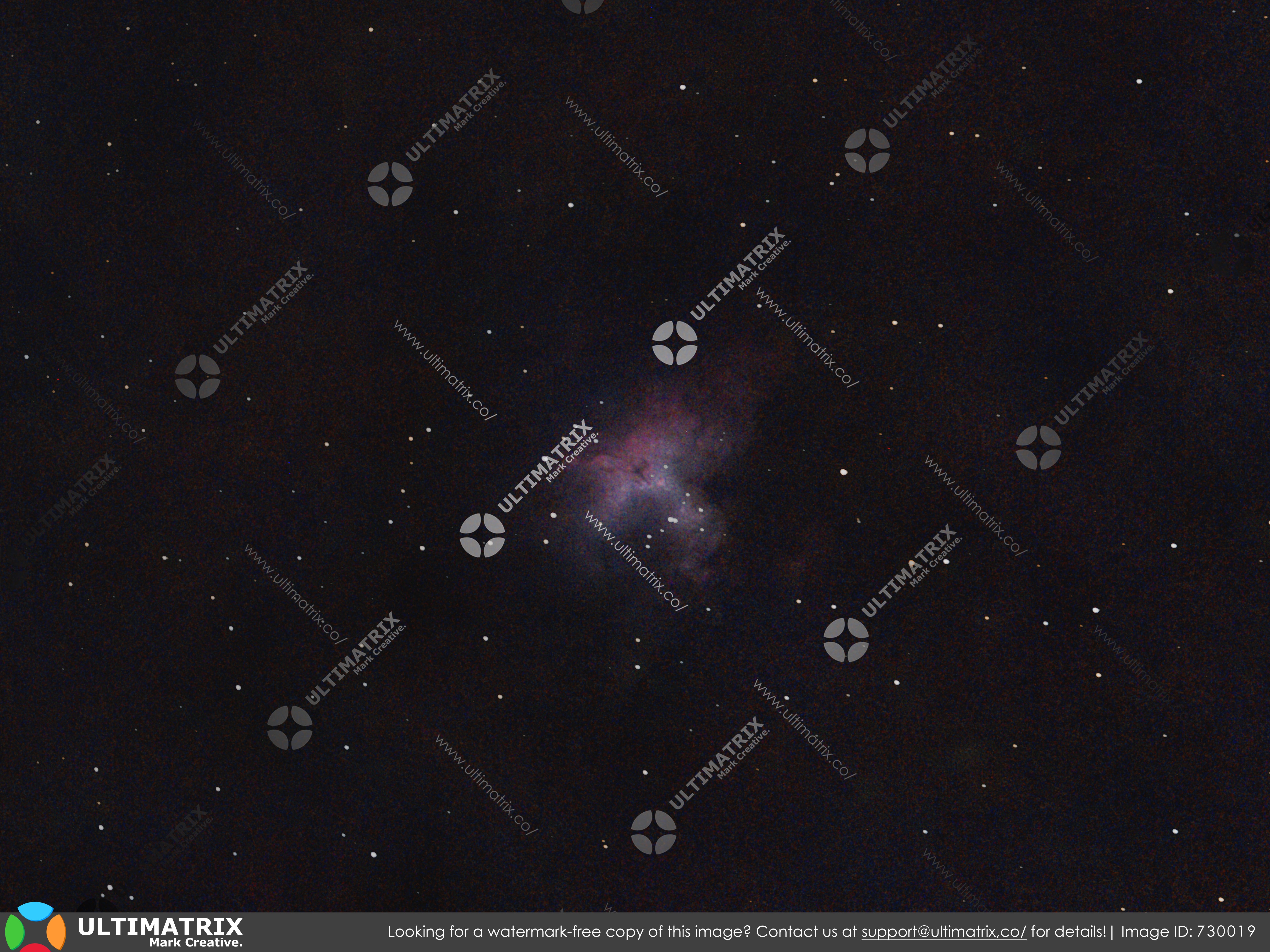
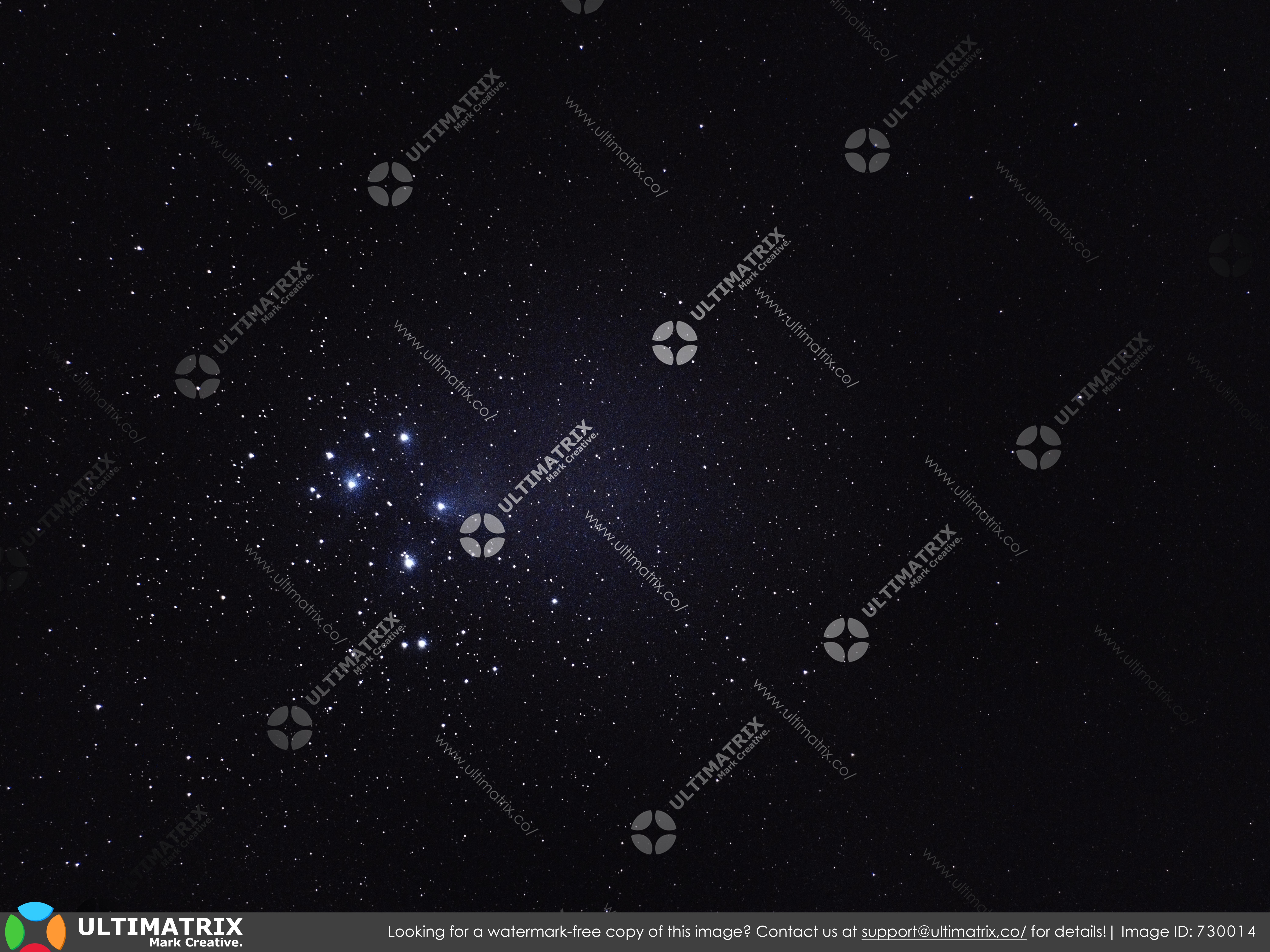

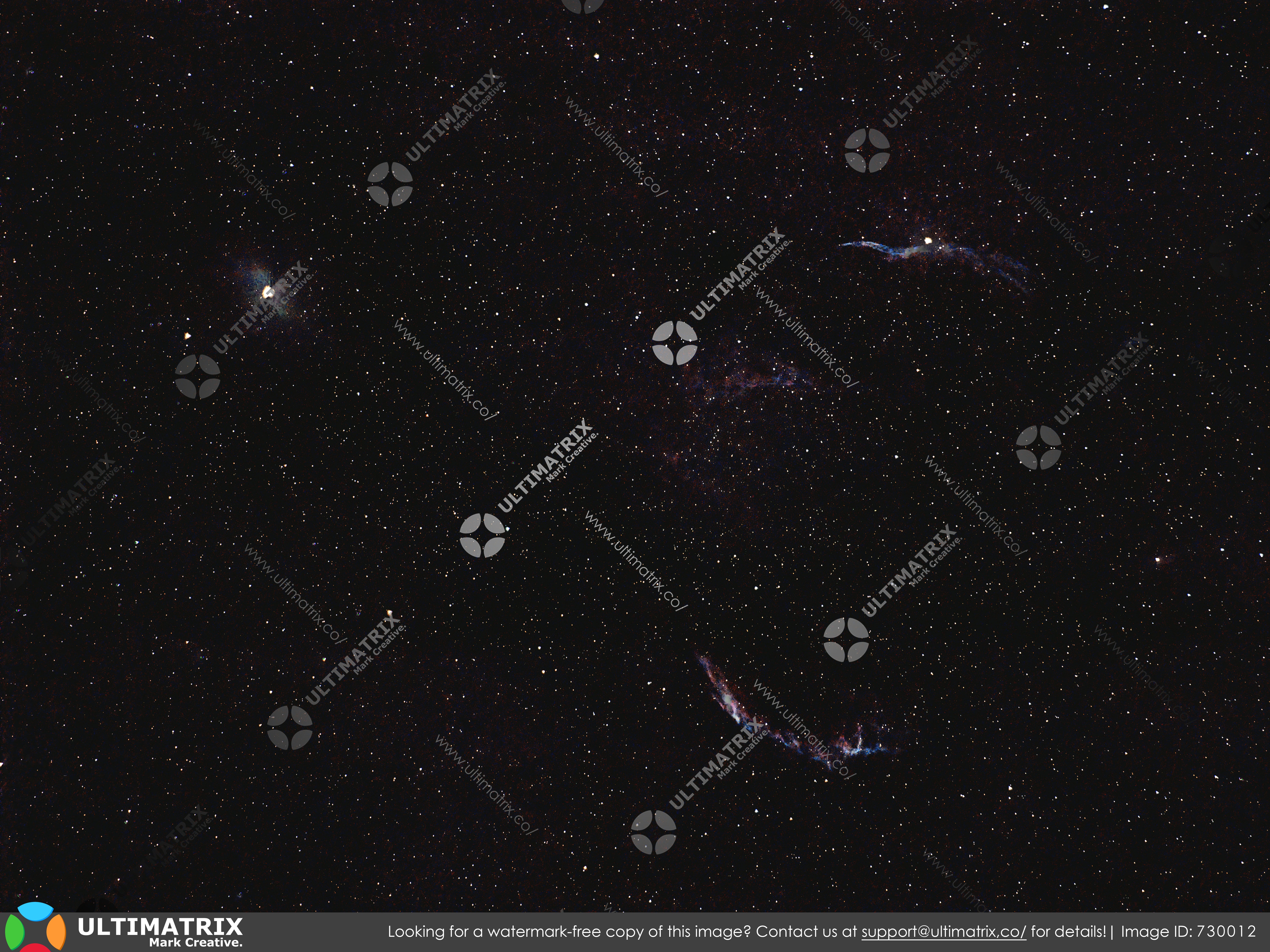




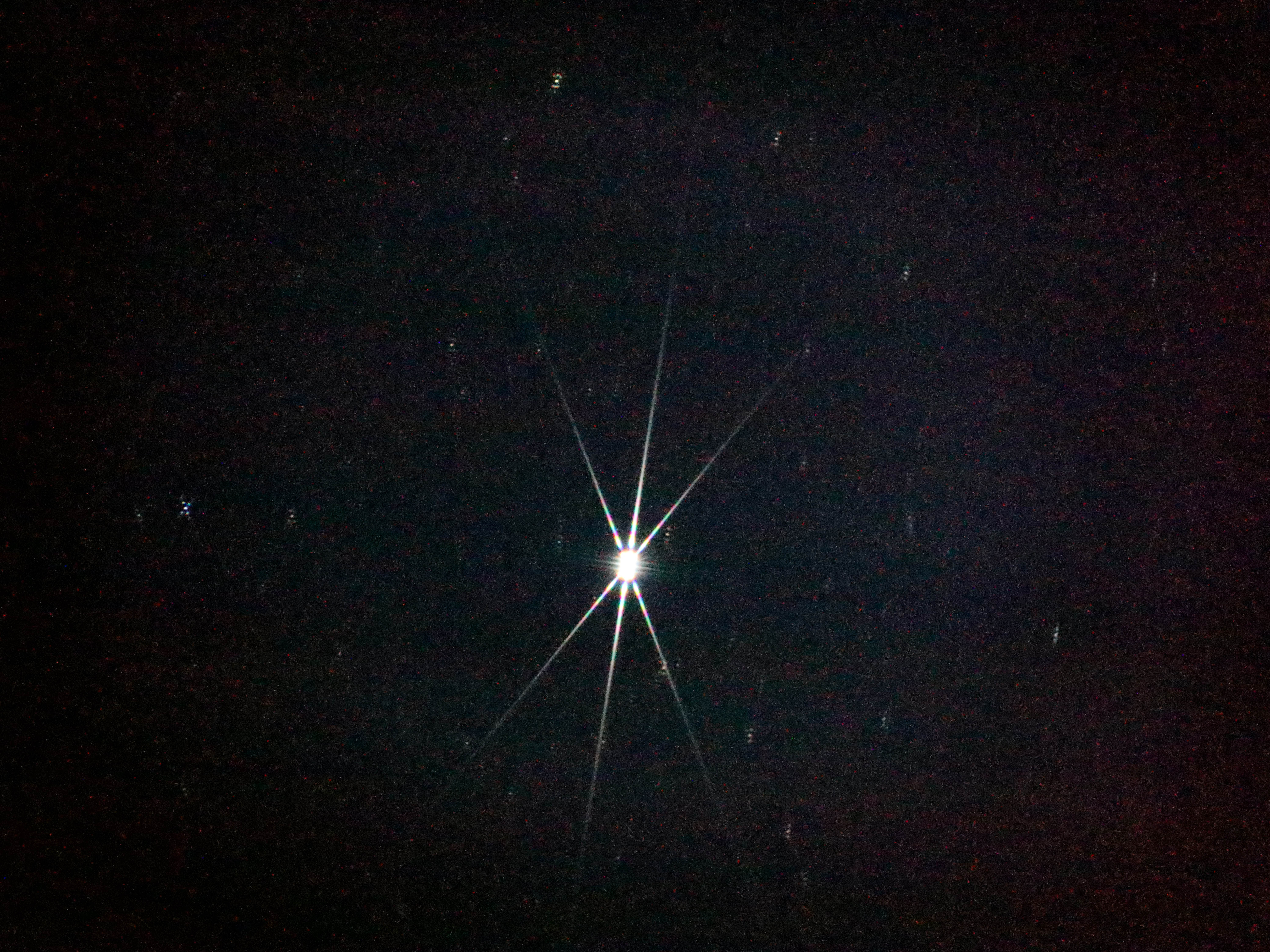
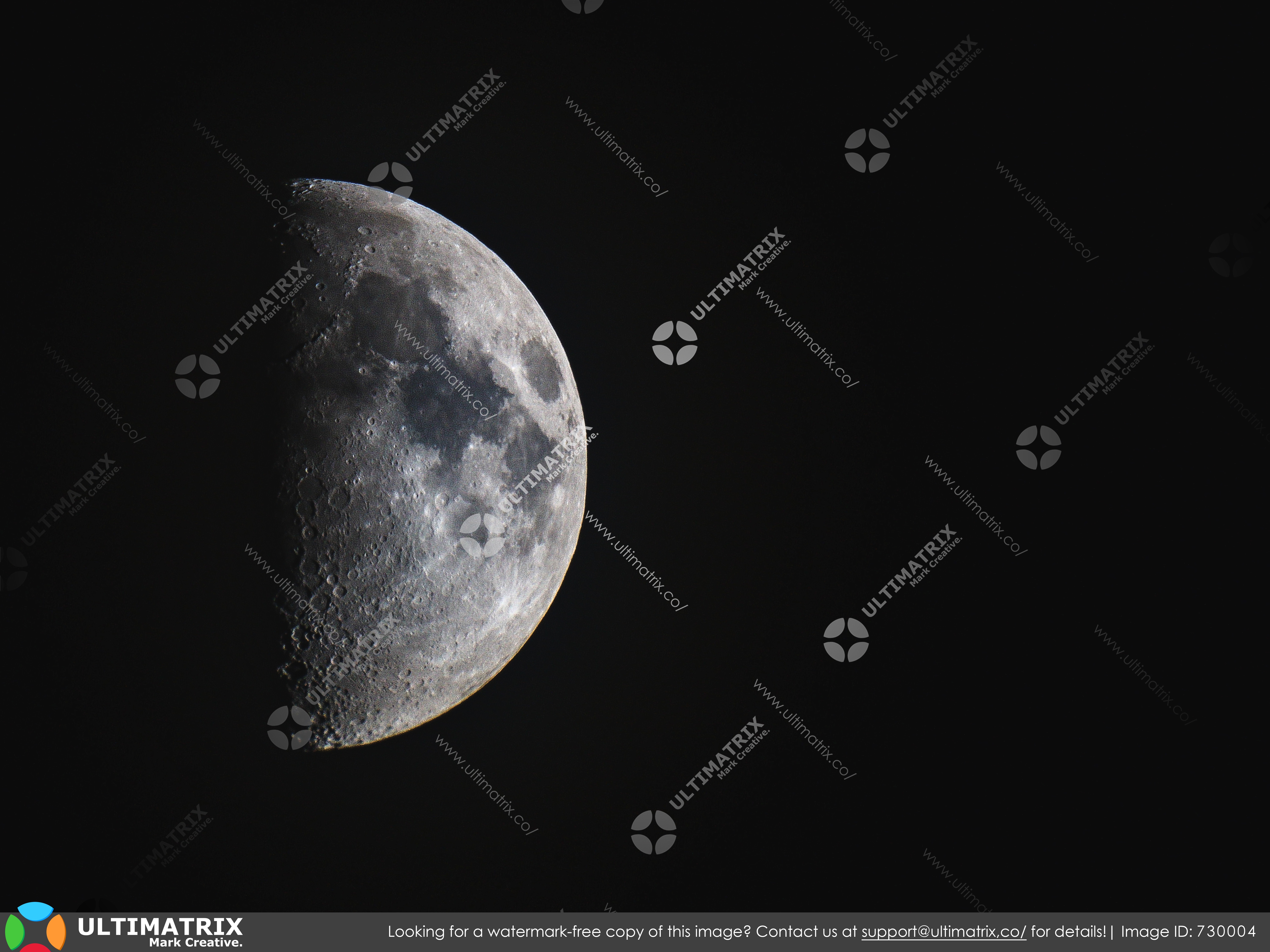





/730001.jpg)
/730002.jpg)
/730003.jpg)



